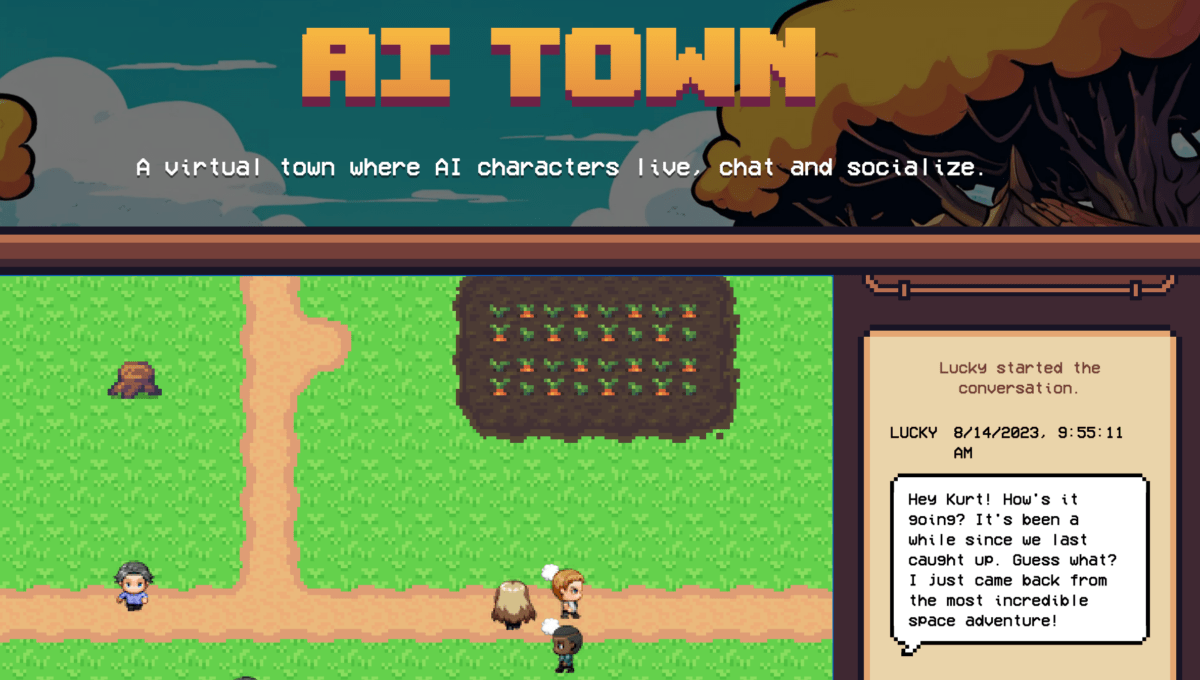My brother asked me if it was possible to have an internet cable 500 feet long. I decided to ask ChatGPT. After reading up on Chatty's various suggestions, I chose the "coaxial cable" option. I researched it and was surprised at how reliable, robust and cheap it was.
I located all the parts I need, created the order, now waiting for confirmation from my brother on measurements before I go ahead and hit the buy button. It came out at around £75 pounds sterling for a 600 feet installation. I then asked chat GPT to package our conversation into a Blog which I have posted here, I have not fact checked anything, except the coaxial cable option.
Extending Internet to 600 Feet: A Comprehensive Guide
In today's digital age, having a reliable and extensive internet connection is crucial. Whether you're working from home, streaming your favourite shows, or simply browsing the web, a strong internet connection can make all the difference. But what if you need to extend your internet connection to a distance of 600 feet or more? This blog post will guide you through the various methods available to achieve this, with a particular focus on Ethernet over Coax (EoC) converters.
Methods to Extend Internet Connection
There are several methods available to extend your internet connection up to 600 feet. These include:
- Ethernet Extender: The most straightforward method involves using an Ethernet cable. However, Ethernet cables (Cat5, Cat5e, Cat6) have a limit of approximately 330 feet (100 meters). To extend this, you can use Ethernet extenders.
- Powerline Adapters: These devices transmit internet over your home's existing electrical circuit. While the theoretical limit can reach up to 984 feet (300 meters), real-world conditions, like the quality of your wiring, can affect this range.
- Wireless Bridges: These devices link networks across considerable distances outdoors. They usually come in pairs, with one device acting as a transmitter and the other as a receiver. Some models can cover distances up to 15 kilometers or more in ideal conditions.
- Mesh Network: A mesh Wi-Fi network involves multiple router-like devices placed around your home that work together to cover your home with a Wi-Fi signal. However, depending on the specific mesh system's range and the number of nodes used, this method can become expensive.
- Point-to-Point Wi-Fi Antennas: This solution involves installing two directional antennas, one at the point where your internet comes in and another at the place you want to extend the signal to. This solution is typically used for long-range outdoor applications.
Regardless of the method you choose, your actual performance will be influenced by environmental factors such as physical obstacles, electrical interference, and the quality of your equipment. It's advisable to consult a professional or do thorough research before making a decision.
Ethernet Over Coax (EoC) Converters: An In-Depth Look
Ethernet extenders, often referred to as Ethernet over Coax (EoC) converters, are devices that allow you to repurpose existing coaxial cable lines for network connectivity. Coaxial cables are commonly used for cable TV and Internet, satellite dish connections, and closed-circuit television (CCTV).
An Ethernet over Coax converter pair essentially transforms these coaxial lines into a high-speed network cable. The setup typically involves two converters: one at each end of the coaxial cable. One converter receives the Ethernet data and converts it into a signal that can be transmitted over the coax cable. The other converter receives this signal and converts it back into Ethernet data.
The advantages of Ethernet extenders/EoC converters include:
- Distance: They can transmit data over much longer distances than traditional Ethernet cables. Some models can reach distances up to 1-2 kilometers.
- Cost-effectiveness: If you already have existing coaxial cables, there's no need to run new Ethernet cables. This can save on installation costs, especially over long distances or in buildings where running new cables would be difficult.
- High Speeds: Ethernet over Coax converters can offer speeds that are suitable for most residential and many business applications.
Ethernet Over Coax in a Passive System
Ethernet over Coax (EoC) solutions can vary significantly in the distances they can cover, depending on the specific hardware used, the quality of the coaxial cabling, and the presence of any interference.
In a passive system, which means there are no active powered components boosting the signal along the cable's length, the transmission distance is typically lower. For example, MoCA (Multimedia over Coax Alliance) technology, which is a popular standard for Ethernet over Coax, states that its technology can achieve distances up to 300 meters (approximately 985 feet) under optimal conditions.
However, real-world results may vary based on the specifics of the setup. For instance, old or poor-quality cables, or cables with a lot of splits or joins, might reduce the achievable distance.
Remember, while EoC can support these longer distances, the speed and quality of the connection may degrade the further the signal has to travel, especially in a passive system without any repeaters or signal boosters. Always consider both the required distance and the necessary data rate for your specific application when choosing a solution.
Choosing the Right Coaxial Cable
You can technically use any type of coaxial cable for Ethernet over Coax (EoC), but not all cables are created equal. The type of coaxial cable you use can have a significant impact on the performance of your network, affecting both the maximum distance and speed that can be achieved.
Here are some common types of coaxial cables and their potential use in EoC applications:
- RG-6: This is a popular type of coax cable for residential and commercial use, often used for cable TV and internet services. RG-6 has better shielding and lower signal loss compared to RG-59, making it a good choice for EoC.
- RG-59: This type of cable is often used for closed-circuit TV (CCTV) and some older cable TV installations. While you can use RG-59 for EoC, its performance may not be as good as RG-6 due to higher signal loss.
- RG-11: This cable has even better performance characteristics than RG-6, but it's also thicker and less flexible, which can make installation more difficult. You might choose RG-11 for very long EoC runs.
Remember that the condition of the cable can also affect your network's performance. Old or damaged cables might not perform as well as new ones. In addition, the specific EoC adapters you're using might be designed for use with certain types of coaxial cables, so always check the manufacturer's recommendations.
In general, if you're planning a new installation and have a choice, RG-6 is often the best choice for EoC due to its balance of performance, cost, and ease of installation. If you're working with existing cabling, use the highest quality cable available to get the best performance from your EoC network.
RG-6 vs. RG-59: Which to Choose?
While RG-59 is not as high-performing as RG-6, it can still be used for Ethernet over Coax (EoC) applications. The main differences between the two are in the shielding and signal loss.
RG-59 cable is typically thinner and has less shielding against interference, which means it can experience higher signal loss over long distances compared to RG-6. This can potentially lead to slower data speeds or more unreliable connections, especially for longer cable runs.
However, the actual impact on your internet connection can depend on a number of factors including the length of the cable run, the quality of the cable and connectors, the specific EoC equipment you're using, and the speed of your internet connection. If you're not pushing the limits of distance or speed, and the environment doesn't have a lot of potential sources of interference, you might not notice a significant difference when using RG-59.
Is an Internet Speed of 10/100 Serviceable?
An internet speed of 10/100 Mbps (10 Mbps upload and 100 Mbps download) can certainly be serviceable for many users, depending on their internet needs. Here's what you can typically do with these speeds:
- Browsing and Email: Web browsing and email typically require minimal bandwidth, and even 10 Mbps is more than enough for these activities.
- Video Streaming: For streaming video, Netflix recommends a speed of 5 Mbps for HD quality, and 25 Mbps for 4K quality per stream. With 100 Mbps download speed, you would comfortably support multiple simultaneous HD streams, or a few 4K streams.
- Online Gaming: Online gaming surprisingly doesn't require very high speeds, but it is sensitive to stability and latency of your connection. Even a speed of 10 Mbps can be enough for most online games, but having more bandwidth like your 100 Mbps download speed provides extra headroom for more stable gameplay, especially with multiple devices connected.
- Video Calls: For video calling, platforms like Zoom recommend a speed of 1.8 Mbps for group video calls in 1080p quality. Again, your 10 Mbps upload speed should handle this without issue.
- Downloading/Uploading Large Files: The 100 Mbps download speed should allow for relatively quick downloads of large files. The 10 Mbps upload speed isn't as fast and might be a bit slow if you frequently need to upload large files.






